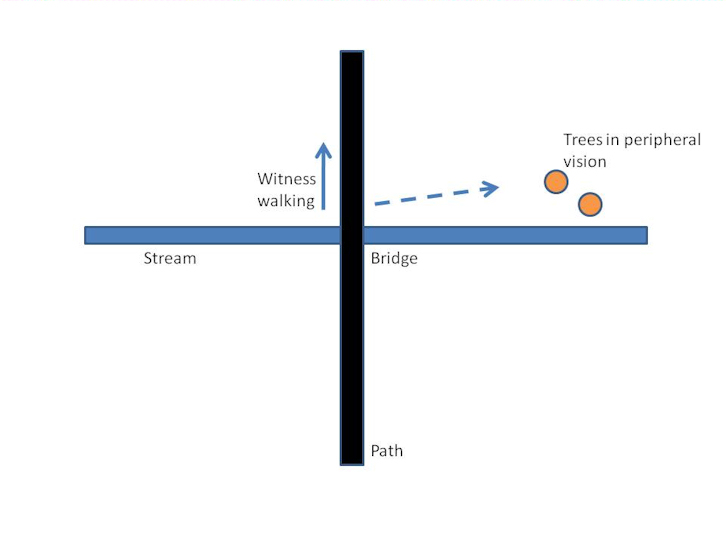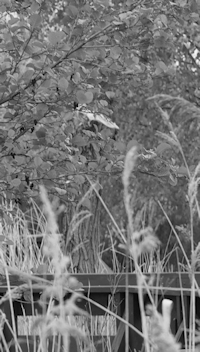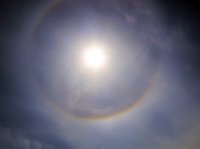Investigating Misperception
Misperception probably accounts for more paranormal reports than any other single cause. It is therefore very important to eliminate it satisfactorily in any paranormal research. This article outlines theoretical methods for testing if misperception could be involved in a paranormal report.
WARNING: The subject of misperception in paranormal cases is still currently being researched. As a result, this article will be updated as new information becomes available. It should NOT be regarded as a definitive or exhaustive account of the subject. Nor is this article a practical guide to paranormal investigation. It is, instead, a description of theoretical methods of testing for misperception.
Background information
It is important to understand misperception before attempting to identify it. It is not explained on this page so you should read some or all of the following first: misperception, shadow ghosts, ghosts - what we know.
The tests outlined here extend existing standard techniques for investigating paranormal reports. Interviewing witnesses, examining the sites of their experiences and trying to recreate the observed phenomena naturally are all standard paranormal investigation procedures. However, to check for misperception, you need specific information that might not already be gathered.
Looking for misperception factors
To see if misperception could be an explanation, you need to look for specific information that might not necessarily be gathered in all investigations. Witnesses, in this case, includes not only those people who casually observe spontaneous phenomena but also researchers on vigils, who are just as susceptible to misperception as anyone else.
The following table outlines some of the factors to examine when looking for evidence of misperception. Most of this information can be derived from interviews but some of it comes from site examination.
Evidence factor |
Looking for ... |
Notes |
Environmental factors |
||
| Illumination | Low and very high illumination levels | Object outlines may blend into other shapes in poor illumination; no colour vision in low light |
| Distance of anomaly | Anomaly far away | At distance objects may not be recognised correctly |
| Direction of anomaly | Anomaly seen initially in peripheral vision | Anomaly may 'vanish' or 'change' when seen in central vision when caused by misperception |
| Duration of sighting | Anomaly only seen briefly | Objects 'glanced' are commonly misperceived |
| Partial anomaly | Anomaly partly obscured by other objects | An object may not be recognised if part of its shape is obscured |
| Observer movement | Head turned rapidly or observer in moving vehicle | Stationary objects may appear to move when the observer moves their head |
| Anomaly movement | Anomaly seen only briefly due to rapid movement - did it 'vanish'? | Similar effect to observer movement |
| Anomaly unrecognised | Object resembled something 'natural' | |
| Anomaly 'changed' | Anomaly appeared to change 'unreasonably' eg. change shape | Could be optical illusion |
| Weather conditions | Fog, heavy rain, other weather causing poor viewing conditions | |
Witness factors |
||
| Witness distracted | Remember what you were thinking at the time just before the sighting | If witness was thinking about matters unrelated to current situation, may misperceive |
| Change blindness | Did another event happen during the sighting or shortly before | Witnesses are easily distracted by moving or changing objects missing other changes |
| Change blindness | Objects 'appear' / 'disappear' but not while in view | Quite dramatic 'scene' changes can be missed, especially if they are rapid |
| Expectation | Aware of any reputation for ghosts, etc? | Witnesses aware of previous anomaly reports may misperceive along similar lines |
| Suggestion | Place appeared or felt 'spooky' before sighting - also local reputation | Surroundings may 'suggest' ghosts eg. cold, dark, humid, lonely, old building - local reputation for strangeness important too |
| Witness habituated | Notice likely background noises eg. birdsong, traffic, wind/rain, etc | Background view and noises no longer being sensed so stronger stimulus appears 'weird' |
Reconstructing the scene
It is vital to examine the scene of the paranormal report, as soon as possible after the original experience. Things change - misperceived objects may be removed - so it is important to get there quickly. There should be an attempt to reconstruct the incident in situ. Ideally, this should occur in similar conditions, especially the level of illumination. Scale plans are useful and photographs essential for such an exercise (though note that cameras 'see' things differently from the naked eye - a cause of many apparently paranormal photos).
When reconstructing paranormal reports, you should try, if possible, to use people who know nothing about the case and the area of the incident, to act as 'test witnesses'. That's because researchers will know how the misperception is supposed to work and so will be unlikely to see it, unless it is extraordinarily dramatic. Misperception works because the witness does not recognise what they are seeing (it is xenonormal). If a researcher familiar with the case looks at a tree, they will probably just see a tree! A witness who knows nothing about the area or case may see it is a human figure, as in the original report!
Illumination can be crucial to misperception. It might create just the right pattern of light and shadow to suggest something weird, for instance. Low light levels deprive us of colour vision which means many details of objects may become invisible. It may result in similarly coloured objects appearing to merge together. In such conditions shadows may be dark enough to make parts of objects appear invisible.
Things to check for on site
Detail level: Is level of detail reported by the witness realistic taking into account the conditions? For example, if a human figure was seen at 50m away in low light, someone could be placed at the relevant position to check what could be seen. If the sighting only lasted 10s, then that is all a 'test witness' would be allowed as well.
Objects that can be misperceived: Are there any suitable objects that might be misperceived in the position indicated in the original report? Do any objects vaguely resemble the one reported, such as a human figure? If there is an object that looks likely, such as a tree, put a human figure next to it - how obvious is the difference?
Note that misperceived objects may no longer be present (because they are temporary, mobile or have subsequently been changed or removed). While this makes investigation more difficult, it doesn't eliminate misperception as a possibility.
Light and shadows: In many cases there may be no misperceived object present at all. Instead a particular pattern of light and shadow might suggest a human figure or other anomaly. This will usually depend critically on the lighting, long shadows and low light being more conducive to misperception. For light/shadow misperception, no object is required to be misperceived but there may be things nearby crucial to producing the shadow patterns. It is vital to visit the site in as near to identical lighting conditions as the original observation as possible.
Out of doors, illumination is impossible to control so you must try to arrange a visit when it will be similar. Even indoors daytime illumination, which usually depends largely on daylight, can be hard to reproduce exactly except by visiting at the right time. Only when sightings take place entirely under artificial lighting at night can it be easily reproduced.
Tests for misperception
If one or more factors in the table above are present, it indicates the possibility that misperception could have taken place. It doesn't mean misperception necessarily took place. We don't see ghost every time we enter a dark alley!
It is also possible to look for positive signs that misperception took place. Factors include:
- seeing the anomaly but NOT the object that could have been misperceived - note 1
- the anomaly sharing certain prominent features with the object that could have been misperceived - note 2
- the witness recalling 'too much' detail of the anomaly for the viewing conditions - note 3
- the anomaly 'vanishes' while (often momentarily) not in view - note 4
Note 1: If the proposed misperceived object was in the same place as the anomaly, it should have been seen as well!
Note 2: An example: a 'figure' had an arm projecting to the right and the misperceived object was a tree with a prominent branch to the right
Note 3: You need to be careful to avoid spurious detail from poor interview technique - crude example is asking 'were the trousers black or grey' rather than 'what colour were the trousers' - visual substitution can produce much more detail than real field observation because it comes from our own memory
Note 4: misperceptions can easily 'break' but this usually happens when the viewer looks away so expect statements like 'the ghost was clearly visible but when I looked away for just a second and then looked back it had disappeared'
Case Study (real)
A witness was walking along a familiar path over a bridge that crossed a stream. They noticed a 'figure' in their right peripheral vision. Surprised that someone would be in that area (which has no path), the witness turned to look directly at the 'figure' but could see no one. Instead, there were two newly pollarded trees in the position where the 'figure' had been. It was daylight with good viewing conditions (not raining, no fog, etc). The witness couldn't recall any details about the 'figure' but they were not good at recalling real people's appearance either!
 This is a plan (not to scale) of the incident. The witness was crossing the bridge looking forward. The trees were in extreme peripheral vision to the right. Significantly, the witness did NOT see the trees while observing the 'figure', even though they were in the same position and of a similar size to it. The witness was a regular visitor to the site and knew it well. However, this was the the first time that they'd noticed the trees had been pollarded, changing the view significantly.
This is a plan (not to scale) of the incident. The witness was crossing the bridge looking forward. The trees were in extreme peripheral vision to the right. Significantly, the witness did NOT see the trees while observing the 'figure', even though they were in the same position and of a similar size to it. The witness was a regular visitor to the site and knew it well. However, this was the the first time that they'd noticed the trees had been pollarded, changing the view significantly.
 In peripheral vision, we see mainly in monochrome and our visual resolution is nothing like as good as our central vision. The photo (right) shows a tree that was misperceived as a human figure, exactly like the one in this case. It has been turned into monochrome to approximate what would been seen in peripheral vision. The tree has a bright round area (where branches have been removed) that is at the right position and height to suggest a human face.
In peripheral vision, we see mainly in monochrome and our visual resolution is nothing like as good as our central vision. The photo (right) shows a tree that was misperceived as a human figure, exactly like the one in this case. It has been turned into monochrome to approximate what would been seen in peripheral vision. The tree has a bright round area (where branches have been removed) that is at the right position and height to suggest a human face.
In the current case study there were TWO pollarded trees next to each other. It is interesting that the witness saw only one figure, not two. The trees were illuminated quite differently, one looking dark, which may explain this oddity. The trees certainly seem to have caused the misperception in this case. The witness, who was well aware of misperception and had experienced it knowingly before, realised immediately that the trees were responsible.
Someone not aware of misperception may well have concluded that they had seen a ghost. After all, they had seen an obvious 'human figure' and on turning to look more carefully it had vanished! Certainly vanishing is a characteristic of ghost sightings.
Analysis of case study
The significant facts in this case are (a) that the 'figure' was seen only in peripheral vision, 'vanishing' when looked at directly, (b) that the pollarded trees were NOT seen at the same time as the 'figure' and (c) the scene, familiar to the witness, had been changed significantly by someone pollarding the trees.
It appears that the witness's attention was probably drawn to the scene by the change following pollarding. The combination of (a) and (b) leads to the obvious conclusion that one of the trees was misperceived by the witness as a figure (the other not visible because it was too dark). It looks like a clear case of misperception. If the witness had seen both the trees AND the figure simultaneously, a different conclusion might have been drawn.
Groups of witnesses
Groups of people can be as vulnerable to misperception as individuals. If one person in a group misperceives something and tells everyone else what they're seeing, psychological suggestion may bias others in the group to see the same thing. Conversely, if someone sees something but others in the group disagree, then the first witness may start to doubt it too. To have a group of witnesses all see the same thing, in such circumstances, does not necessarily make the evidence any stronger.
Conclusion
Misperception should always be considered as the most likely possibility in most paranormal reports. Humans are not neutral recorders of their environment and should not be treated as such. Only once we have eliminated misperception as a possibility should other explanations, including the paranormal, be considered.
© Maurice Townsend 2023
